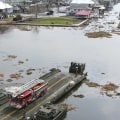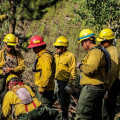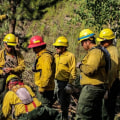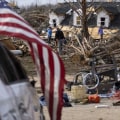Emergency response training is a critical part of any organization's safety plan. Professional trainers are commissioned to teach employees the procedures they should follow in the event of an emergency, such as a fire, an earthquake or a flood. OSSE, together with Strategic Educational Consulting, LLC, has developed a new emergency response plan template for providers to use to comply with new licensing regulations. This training session is designed to help participants create a comprehensive plan and complete the template step by step, including identifying potential threats near a child development center, creating an emergency alert system, and communicating with parents and first responders.
Developing a comprehensive emergency action plan involves carrying out a hazard assessment to determine what physical or chemical hazards inside or outside workplaces could cause an emergency, if any. The plan should describe how workers will respond to different types of emergencies, taking into account specific workplace designs, structural features, and emergency systems. If there is more than one work site, each site must have an emergency action plan. Emergency preparedness training can give you the skills needed to react properly to emergency situations, so you can better protect yourself and help others until first responders arrive. Life-threatening emergencies can happen quickly, and you may be able to save a life by taking simple steps right away.
Training opportunities include in-person and web-based offerings and are provided at no cost to members of the Cornell community. Training is essential to ensure that everyone knows what to do when there is an emergency or business interruption. Everyone needs training to familiarize themselves with protective measures for the safety of life (e.g., review protective measures to ensure the safety of life and perform evacuation drills (“fire drills”) as required by local regulations). Shelter and confinement drills must also be carried out.
Employees should be trained to familiarize themselves with security programs, building security, information security, and other loss prevention programs. FEMA provides first-rate training and education to first responders and emergency managers in the country and to other members throughout the community through a strong company of institutions and associations managed by the National Training and Education Division (NTED) of the National Directorate of Preparedness and the U. S. Department of Education. The National Fire Academy (NFA) is the country's leading provider of leadership skills and advanced technical training for local fire and emergency services.
The Home Preparedness Center (CDP) offers more than 50 training courses at its resident campus in Anniston (Alabama) and through mobile delivery, focusing on incident management, responding to numerous victims and emergency response to a catastrophic natural disaster or terrorist act. The CDP also offers a series of virtual training courses. The Emergency Management Institute (EMI) acts as the national focal point for the development and delivery of emergency management training to improve the capacities of federal, state, local, tribal and territorial government officials, volunteer organizations, and the public and private sectors to minimize the impact of disasters. The National Domestic Preparedness Consortium (NDPC) is an association of several nationally recognized organizations whose membership is based on the urgent need to address the counter-terrorism preparedness needs of the country's emergency responders in the context of all hazards, including the chemical, biological, radiological and explosive hazards of weapons of mass destruction (WMD).In some cases, emergency situations can be anticipated and planned accordingly. Other times, professionals can only respond to emergencies after they have occurred.
Drills and exercises should also be conducted to validate emergency response, business continuity and communications plans in the event of a crisis and evaluate the capacity of staff to perform the functions and responsibilities assigned to them. Emergency responses to the release of hazardous substances are covered by OSHA's Hazardous Waste Operations and Emergency Response (HAZWOPER) standard (29 CFR 1910.120). To use the guide effectively, the employer must assess the risk of a hazardous substance being released to emergency response workers and base the selection of personal protective equipment on that risk. The training provided by the CDP is funded by the federal government at no cost to state, local, tribal and territorial emergency response professionals or their agencies. Emergency Response Resources from National Institute for Occupational Safety and Health (NIOSH), Centers for Disease Control and Prevention (CDC), U. S., can help small establishments include places in their plan where workers or emergency responders can interrupt public services (such as electricity and gas) of all or part of their facilities. When developing an emergency action plan, consider selecting a responsible person to direct and coordinate the emergency and evacuation plan.
It is critical for employers to ensure that workers know who this coordinator is so they understand that they have a responsibility to make life-saving decisions during an emergency. Workers designated to help in cases of emergency should know workers with special needs (who may need additional assistance during an evacuation), how to use and direct others to use the buddy system, as well as any hazardous areas that should be avoided during an evacuation. The American Red Cross website links resources on personal emergency kits, emergency planning and communications. Organizations' Preparedness Education Network (OPEN) is designed to empower these organizations so that they can better prepare for incidents with ten preparedness actions and a guide on developing disaster response plans.
The Federal Emergency Management Agency (FEMA) of the Department of Homeland Security (DHS) can activate OSHA to lead implementation of Worker Safety & Health Support Annex from National Response Framework (NRF) in order protect safety & health of response & recovery workers during an emergency involving release hazardous substances.






